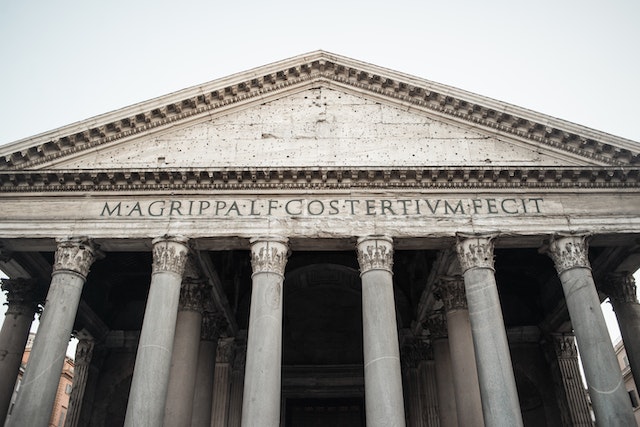
Why do we have capital letters? Because the majority of the letters in the alphabet we use came from Latin.
This question is actually the wrong way round. It should be asking why we have lowercase letters. The majority of our writing these days is done in lowercase with the occasional capital letter thrown in, but this wasn’t always the way. Our lowercase letters have evolved from their uppercase counterparts.
The alphabet we use is mostly inherited from the Latin alphabet that the Romans used. However, this alphabet didn’t spring into being. The theory is that the letters began as some form of hieroglyph that were then turned into symbols by the ancestors of the Phoenicians, in about 1700 BC. This happened in many different cultures around the world. Characters that represent a word are more limiting than several symbols that represent the sound of a word. This can be seen in languages like Chinese and Japanese that still use the image for a word system and are famously difficult to be able to read. From there, the shapes of the symbols gradually evolved with the Phoenicians, the ancient Greeks, the Etruscans, and then the Romans.
The Romans, along with many other civilizations that had writing, wrote their alphabets entirely in straight edged letters. This is because the most common type of writing was carved on a building, a monument, a stone, or a tablet of some kind. It is very difficult to carve a curved line. As the Romans conquered all of Europe and Northern Africa, they took their writing system with them and people used these block letters to write. Not a lot of people were writing and there was no real need to change the system.
Things started to change with the invention of parchment and paper. It enabled more people to write and an educated class started to appear. This rapidly grew with the growing popularity of Christianity because it became necessary to make copies of the Bible. There were no printing presses, so every copy had to be written by hand. When scribes wrote out the rigid Latin letters, the shapes of them started to change. When people write a lot, they write faster and they start to join their letters together. You cannot easily join together uppercase letters and, if you do, they start to resemble lowercase letters. Over time, possibly a few hundred years, the uppercase letters gradually evolved into lowercase letters. They became letters that could be written quickly and joined together. You can see it for yourself if you get a piece of paper and write ABC…XYZ as fast as you can while joining the letters. They will look like their lowercase forms. This also makes it clear why some capital letters are just larger versions of their lowercase forms and some capitals are completely different. E, for example. If you write E fast, the middle and top bars connect, making the loop. D as well. If you draw the stick first, then the loop part, but want to continue on to the next letter, you end up drawing a second small loop to double back on yourself. Over time, the big loop vanished and just left the small one, making d.
By the 8th century, the letters had almost completely evolved into the small, rounded letters that we know now. They were called Carolingian miniscule because they were small and they were popularized by Charlemangne, King of the Franks. However, people still used uppercase letters haphazardly. A word could have a mix of both throughout it. By the turn of the millennia, people had started using capital letters more stylishly and they were used at the start of sentences and for all nouns. Capitalizing all nouns is still the case in Germany. There was still no form of standardization until the printing press was invented and books and writing became more mainstream. This is when the word “capital” was first used and it comes from the Latin capit, which means head. The capital letter was the head of the sentence. Gradually we stopped capitalizing all nouns and only kept capital letters for the purposes we use them today.
The printing press is also the reason why we say uppercase and lowercase. All of the letters were cast and placed in cases. The upper case was full of capital letters and the lower case was full of smaller letters. And this is what I learned today.
Photo by ArtHouse Studio: https://www.pexels.com/photo/stone-portico-of-magnificent-pantheon-in-rome-4558407/
Sources
https://www.babbel.com/en/magazine/history-of-capital-letters
https://www.adelaide.edu.au/library/special/exhibitions/cover-to-cover/papyrus/
https://en.wikipedia.org/wiki/Capitalization_in_English
